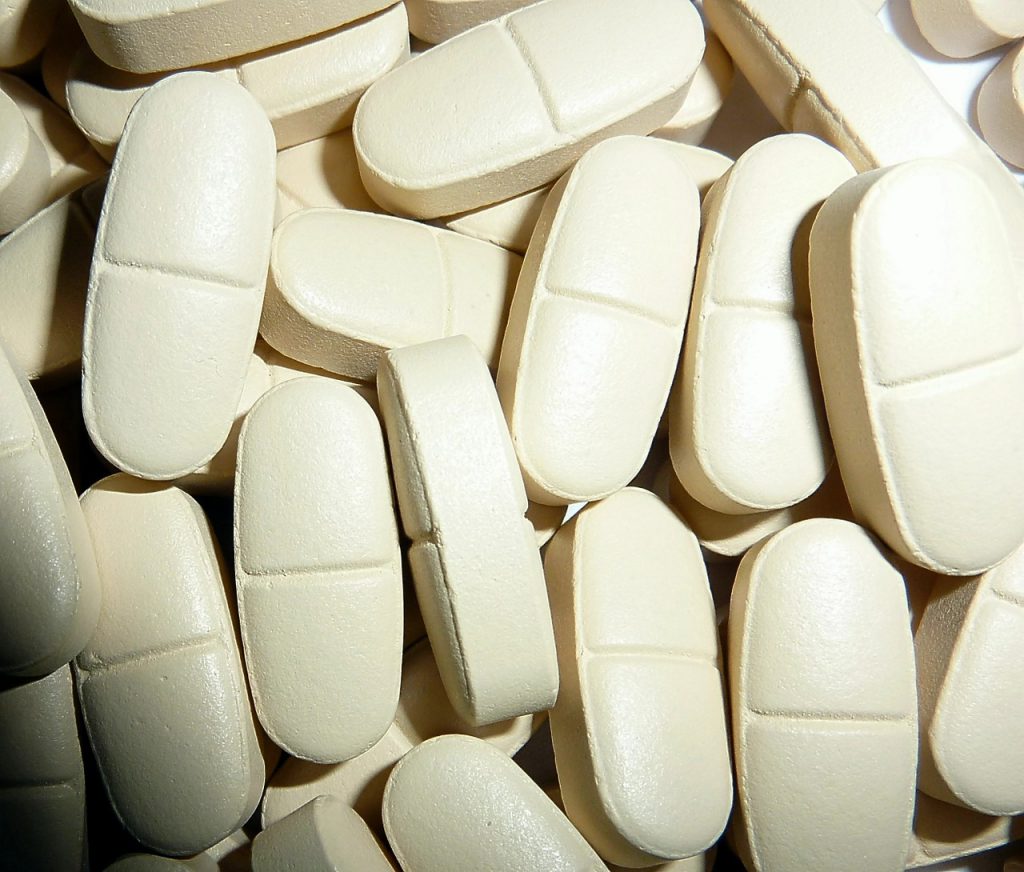Glucosamine is one of the best supplements to reduce any joint pain, inflammation and stiffness associated with osteoarthritis or sport injuries. Although it was initially thought to provide building blocks for building cartilage, researchers now know that the main action of glucosamine is to damp down inflammation and act as a biological signal to switch on tissue regeneration. Glucosamine is important for healthy joints as it promotes the formation of synovial fluid (your joints’ oil) and makes it more cushioning, boosts the elasticity of joint cartilage, and helps to strengthen ligaments and intervertebral discs.
Glucosamine production reduces with age
Although your cells can make small quantities of glucosamine, this is a slow process and it is often in short supply. The ability to synthesise glucosamine declines with age, as does the production of a glucosamine derivative (known as aggrecan) so that the amount produced in cartilage cells typically reduces by half between the ages of 45 and 20; by the age of 69, you make just 25% of the amounts made in your youth.
No wonder your joints become creakier as their synovial fluid (the joint’s oil) becomes thinner and less cushioning and cartilage becomes more brittle and starts flaking away! Glucosamine is one of the best supplements for older people with aching joints, and for younger people with sports-related injuries. A study published in the International Journal of Rheumatology concluded that long-term treatment with glucosamine can:
- Reduce pain
- Improve joint mobility
- Reduce the progression of osteoarthritis
- Reduce the risk of needing a total joint replacement.
As a bonus, the anti-inflammatory action of glucosamine may explain findings that people who take glucosamine supplements tend to live longer than those who don’t.
Glucosamine research
Several negative trials involving glucosamine have gained lots of publicity, but in some of these trials people only took glucosamine for one week, and one large analysis of data only selected ten out of 58 eligible studies. The results, published in the British Medical Journal were used to discourage doctors from prescribing glucosamine on the NHS, which is fair enough – the cost if everyone demanded a prescription from their doctor would be prohibitive. The authors did confirm that supplements are safe, and that there is ‘no harm in having patients continue these preparations as long as they perceive a benefit and cover the costs of treatment themselves.’ You can read about the positive and negative trials, if you are interested, on my nutritional medicine website.
Everyone is different, and the only way to know if glucosamine supplements will help you is to try them. In my experience, 2 out of 3 people notice a significant improvement in joint pain, joint stiffness and backache when taking glucosamine. Benefits are usually seen within one to two months of taking glucosamine regularly.
Which glucosamine is best?
Initially, only glucosamine sulphate (sulfate) extracted from the shells of crabs and shrimp was available, so this was the form used in early clinical trials. Now, other forms such as glucosamine hydrochloride are available and the evidence that one is better than the other is less convincing. Both glucosamine sulphate and glucosamine hydrochloride act like prescribed non-steroidal anti-inflammatory drugs (NSAIDs), reducing pain and inflammation by blocking the production of an enzyme known as COX-2.
Glucosamine sulphate supplies additional sulphur/sulfur which may have an independent anti-inflammatory action. One form includes sodium (glucosamine sulphate NaCl) and one includes potassium (glucosamine sulphate 2KCl). Both are equally effective but if you are cutting back on salt/sodium intake (for example because you have high blood pressure) then select the 2KCl form.
Glucosamine hydrochloride (HCl) provides a more concentrated supplement that, weight for weight, supplies 40% more glucosamine than glucosamine sulphate, so tablets are smaller.
Glucosamine is often combined with other ingredients, especially chondroitin sulphate or MSM (methyl-sulphonyl-methane) which have complementary actions.
Chondroitin supplies additional building blocks for making cartilage, and also inhibits enzymes involved in cartilage breakdown, while MSM has an anti-inflammatory action.
I recommend starting with a glucosamine supplement as the cheapest option. If you don’t achieve the expected reduction in symptoms within 2 months, upgrade to glucosamine plus chondroitin and/or MSM. If financial cost is not a consideration, then you may wish to start taking a glucosamine plus chondroitin sulphate supplement straight away.
The most important factor is to select good quality supplements, made to a pharmaceutical standard known as GMP (Good Manufacturing Practice). This ensures that you get a consistent dose with the stated amount of glucosamine in each tablet.
Glucosamine dose
The therapeutic dose established in clinical trials is 1500mg glucosamine per day. It’s a good idea to start taking this dose for 2 months to assess how you respond. Once your symptoms have improved, you could try cutting back to 1000mg or even 750mg per day to see if improvement is maintained at the lower dose. If not, switch back up to the full 1500mg per day. All glucosamine supplements are best taken with food to maximise absorption.
Oral glucosamine supplements can be used alongside rub-in pain relief creams and gels for additional benefit.
Click here to read my review of glucosamine gels and other topical pain relieving creams.
Click here to read my review of the best non-prescription painkillers.
Click here to discover the 9 best supplements for painful knees.
Have you taken an oral glucosamine supplement? If so, what for? How long did they take to work?
If you have any questions or comments, please use the form below.
Image credit: frauke_feind / pixabay

